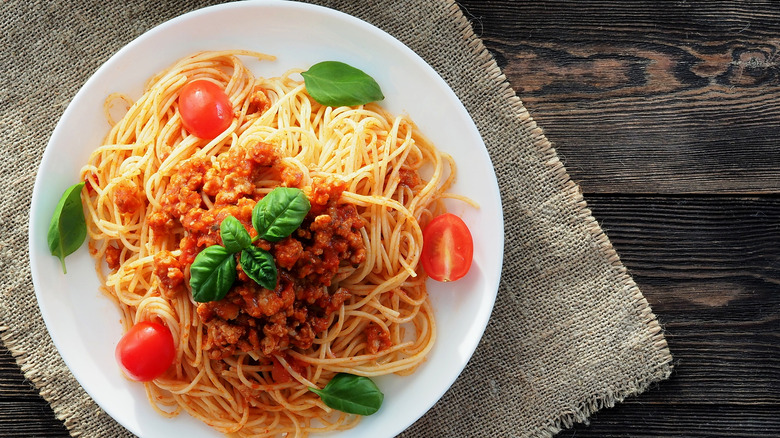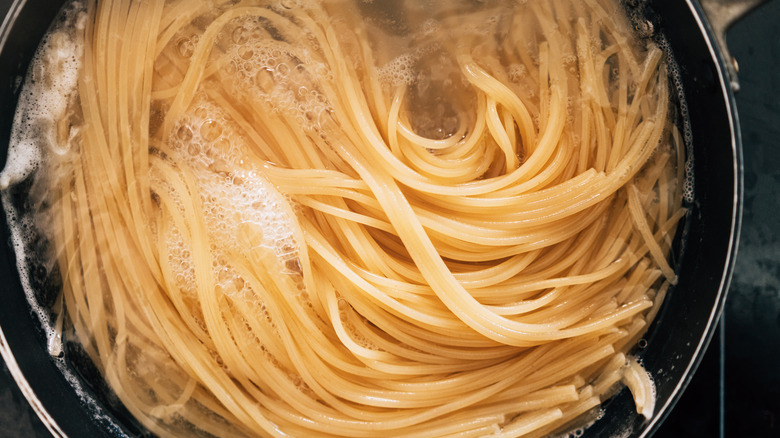Everything You Need To Know About Cooking Pasta Al Dente
As hard as it would be to say that there is one absolute way to cook pasta, Italian chefs would likely cringe at the idea of throwing the spaghetti at the wall to see if it sticks. In "il bel paese," cooking pasta al dente is not only the way to go, but the only way. But what exactly does al dente mean?
The Spruce Eats expands on not only the meaning in terms of pasta, but the term in itself. In Italian, al dente literally means "to the tooth." While there's always an argument as to exactly where the line is drawn, the idea of it is that pasta should be soft enough to chew through without any problems but doesn't fall into mushy territory. Some chefs consider their pasta al dente only when there is still a tidbit of white showing on the inside, though it's not necessarily considered the standard (via The Spruce Eats). But how exactly do you achieve this so-called al dente?
Extra measures for al dente pasta
In a piece by Bon Appétit, the publication actually delves into more than just boiling your pasta to the point of being perfectly al dente. If you're disregarding the instructions on the back of the pasta box and tasting the pasta along the way, you're already on the right track, but maybe not all the way there.
What Bon Appétit recommends is that you take your pasta out of the pot even before it's al dente — what it refers to as molto (or very) al dente. Reason being is that even after your spaghetti or penne (or whatever your favorite pasta form is) is finished, it's still not technically finished cooking. Once you strain your pasta, it will typically be thrown into the sauce your making, naturally cooking itself even longer, so it's best to consider this step when boiling your pasta. When it comes to al dente, there's a lot more to it than meets the eye, or even the tooth, for that matter.

